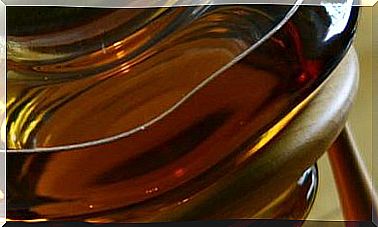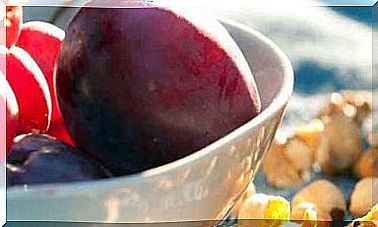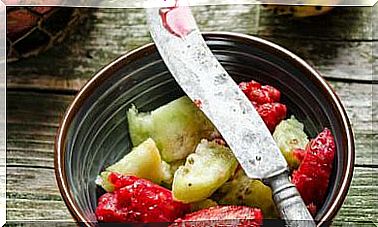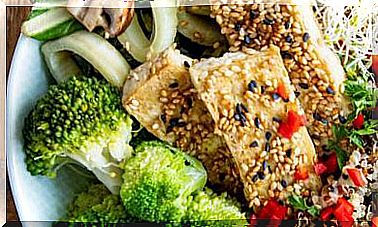Thermotherapy: 18 Ways To Apply Heat To Relieve Pain And Reduce Ailments
Heat can be used in different ways to relieve pain and reduce certain ailments.
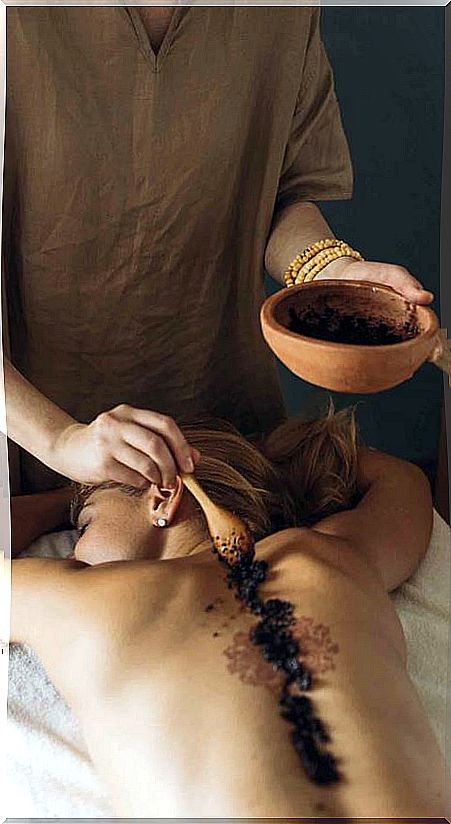
Without heat, neither life nor health are possible. The heat has something that everyone likes. By soaking in a warm bath, tucking in bed, or sunbathing, we feel comforted. But the heat has also been revealed as an effective aid to regain health and well-being.
It has been used for this purpose for thousands of years and current science is developing its possibilities. “Give me a fever and I will cure all diseases”, said Hippocrates in the fourth century BC.
The variety of applications of heat shows that it is one of the main allies of health. It is the element that causes all substantial transformations – ice into water or steam, for example – and the most useful tool in the hands of the human being who seeks well-being.
Effects and benefits of heat on the body
The heat generated by the body itself or that applied for therapeutic purposes provides benefits in many areas : it can help to quickly overcome common mild conditions, alleviate the discomfort of chronic diseases and play a positive role in serious disorders such as cancer.
- In cells, moderately high temperatures increase metabolic processes, which slow down when crossing a certain threshold. Tissue repair is also accelerated.
- The immune cells are most effective against viruses, bacteria and precancerous cells.
- Blood vessels contract and then dilate, improving blood flow and cellular nutrition. Dilation lowers blood pressure.
- In addition, the blood becomes alkaline and this reduces viscosity and blood glucose, as more fluid is exchanged with the lymphatic system.
- It helps to eliminate toxic substances, either through sweat or urine.
- Mitigates digestive secretions and increases bowel movements applied locally.
- At the muscular level, it relaxes and softens muscles, tendons and cartilage. It is antispasmodic, increases elasticity and calms fatigue.
- On the skin, its temperature increases and causes the arrival of blood, in addition to perspiration.
- It reduces the sensitivity to pain of the nerve endings, making it sedative and analgesic.
What is applying heat good for?
These are the cases in which heat treatment is indicated :
- Stress and insomnia, applying it in hot baths and with other hot water hydrotherapy techniques .
- Musculoskeletal injuries : bruises, muscle tears, sprains, tendinitis or fractures.
- Circulatory problems.
- Autoimmune diseases such as arthritis. It is necessary to consult with the specialist doctor.
- Chronic fatigue and fibromyalgia, with a mild “artificial fever”. Many patients feel more energetic after the sessions.
- Neuralgia and angina pectoris.
The use of heat is general in all traditional medicines and its properties are still being investigated, for example in oncology.
Can fever be beneficial for health?
The human body must maintain its internal temperature within a narrow range – between 36.5 and 37.5 ºC – for all physiological functions to be carried out correctly.
For this reason, when it is very cold or very hot, the body is equipped with mechanisms to conserve or lose heat. The transpiration, for example, the temperature is lowered, while muscle activity, the increased.
However, in certain situations a slight increase in temperature is beneficial.
When a bacterium or virus poses a threat to health, the body responds by increasing it above normal. Interestingly, pathogenic bacteria and viruses are more vulnerable to heat than healthy cells.
When the temperature is between 38 and 39 ° C, immune cells work more efficiently and penetrate diseased body tissue more easily. It also improves the supply of oxygen and nutrients to the affected organs.
Therefore, fever is one of the most effective remedies for the immune system and should not be cut off unless it poses a risk.
The properties of heat justify its therapeutic use. You can even cause artificial fever to promote healing or well-being in certain cases.
Artificial fever: what it is, how it is caused and what it is used for
By “artificial fever” is meant a significant increase in temperature inside the body, in the deeper organs and tissues, not just on the surface.
At the end of the 19th century, the first studies appeared linking fever caused by infection with a reduction in the size of tumors. The reason is that cancer cells are less adaptable to heat than healthy cells because the diseased tissue does not receive enough blood supply to dissipate the temperature.
Heat is not a miracle cure, but it is considered an aid in certain cases (cancer of the prostate, testicles, liver, pancreas, neck or skin for example), in combination with chemotherapy and radiotherapy.
To cause an increase above 42.5 ºC and up to 47 ºC in the area to be treated, oncology has resorted to heating the blood outside the body, wrapping the patient in hot water suits or applying microwaves and waves high frequency electrical systems, among other techniques. The possibility of introducing magnetic nanoparticles into diseased cells to act as conductors and accumulators of heat is being investigated .
Infrared stretcher to cause fever
In the treatment of other diseases, such as certain chronic pain, asthma, migraine, atopic eczema, urinary tract infections or osteoarthritis, a lower “artificial fever” is produced with milder means.
It is claimed to be useful in cases of chronic fatigue and stress, fibromyalgia and in people who over the years have lost the ability to respond to infections with fever.
A few sessions can get an arthritis patient to give up pain pills or a person with eczema to replace cortisone cream. Many people report that after undergoing treatment they feel more energetic.
Another property of “artificial fever” is purifying. Through sweating, toxic agents are eliminated, which can also be decomposed and reabsorbed due to the increase in metabolic activity.
The infrared table is used, for example, to relieve muscle aches, soothe inflammations, activate circulation, increase defenses and resistance to cold or generate deep relaxation. Some experts recommend three to five sessions spread throughout the year as a preventive strategy against infections.
On the infrared table, the body is artificially subjected to a fever of 39 ° C for 90 minutes while the doctor monitors blood pressure, heart rate, and fluid loss.
Contraindications and side effects
It should always be done under medical supervision.
Treatment is only contraindicated in case of pregnancy or advanced cardiovascular diseases.
Side effects are rare, such as slight dizziness and profuse perspiration that can persist for a few hours after treatment.
Local heat: what is the use of applying heat to the skin
“Artificial fever” is the most sophisticated therapeutic application of heat, but there are simpler treatments, where the heat does not reach deep areas but can even be done at home to treat minor problems such as sprains, contractures, bruises and other injuries.
Heat reduces pain and helps tissue regenerate faster. The complaints of chronic diseases such as osteoarthritis or arthritis can also be treated in a similar way.
External heat applications can be done with wet cloths, baths, sachets, packets, electric blankets, and infrared lamps. All these means, frequently used by physiotherapists in rehabilitation treatments, increase the temperature of the skin and the tissues immediately below.
The surface heat produces a number of effects well known as:
- Soften collagen
- Decrease joint pain, stiffness, and inflammation
- Reduce the accumulation of fluids in a certain area
- Eliminate muscle spasm.
- Increase blood flow, which by providing nutrients and oxygen promotes healing.
The temperature in external applications usually oscillates between 40 and 45 ° C and the duration of the treatments, between 5 and 30 minutes.
They do not usually have contraindications, although extreme care is recommended in the case of circulatory insufficiency, anticoagulant treatments and pregnancy.
Hot water bottle relief
Applying a hot water bottle to the painful area produces almost immediate relief. If you want to enhance and extend its effects, you can wrap it in a cloth.
Scientists from University College London (UCL) have explained the effectiveness of this folk remedy. Colic, cystitis and menstrual pain are due to a temporary reduction in blood flow or distention of hollow organs such as the intestine or uterus, which damages tissues and activates pain receptors.
By applying a heat of 40ºC to the skin, close to where the pain occurs, the brain receives the heat signal and it replaces the pain signal. On a biochemical level, the bag acts like an analgesic pill, but without its possible side effects.
Wet compresses
Moist heat is generally considered to be more effective because water transfers temperature more quickly than air. The heat reaches deeper levels, which increases the effects on the muscles, joints and soft tissues. Muscle spasm is one of the main indications.
The optimal application is a series of three to four compresses, each leaving 5 to 10 minutes. Be careful that the compress is not too hot because it could cause a burn.
Peloids
In physiotherapy, the products formed by water (sea or mineral-medicinal) and organic or inorganic substances that conserve temperature and provide agents with therapeutic properties are thus called.
They are peloids:
- the sludge (clay and sulfated sulfur water, or chlorided),
- the slime (clay, silica or limestone and salt water),
- the peats (plant residues, clay and water)
- and biogleas (algae and sulphurous water).
They are applied locally or generally at a temperature of 38 to 45 ºC for 15-20 minutes.
Sand
It is normally applied as a general bath. The patient is covered with hot sand at a temperature between 40 and 45º C. The duration of the application should not exceed 30 minutes.
Dry wraps
Warm sheets or blankets are used in local or general applications for longer than other techniques. They are easy to apply and allow more precise temperature control. They are indicated in rheumatic diseases and osteoarthritis.
Hay sack
It is very effective in relieving arthritis or osteoarthritis pain, as well as occasional discomfort (for example, low back pain).
The bag can be found in dietetics or made by introducing the hay (leaves, seeds and flowers) in a linen bag so that it acquires a thickness of 5 to 10 centimeters.
To prepare it, a little boiling water is sprayed on the bag and placed in a steamer. While the water is boiling, the bag is turned from time to time so that the heat is distributed evenly.
Once it is very hot, but not so hot that it can cause a burn, it can be applied to any part of the body. The application time ranges from half an hour to an hour; once finished, it is convenient to wash with a cloth dampened in cold water.
Dry air
The hot air bath is taken in closed rooms where the temperature rises from 40 ºC to 60 ºC and the duration ranges from 25 to 60 minutes.
In local applications, a kind of sleeves or boxes are used where the area to be treated is inserted. Another form of application is in the form of a jet on the affected area. Hot air from a hair dryer is a domestic but effective version of the technique.
Moxibustion
Temperature is essential in the functioning of the body, according to traditional Chinese medicine. The disease can be the consequence of both an excess as well as a defect of cold or heat in the different organs.
The treatment sometimes involves providing heat and you can resort to moxibustion, a technique that consists of burning sticks of Artemisa vulgaris or Artemisa sinensis near the chosen acupuncture points. The therapist can indicate to the patient the points to be treated so that they can take care of themselves at home.
Although a good diagnosis and treatment can only be done by a therapist, moxa is generally indicated to treat the sensation of cold and excessive mucus.
It is contraindicated in diseases that cause fever, in pregnancy and in people with sensitive skin.
Paraffin baths
They are used in trauma and rheumatism. It is a common treatment for osteoarthritis.
It consists of immersing the area to be treated in a container filled with a mixture of paraffin and vegetable oil at a temperature that ranges between 50 and 55 degrees. The paraffin builds up layers and transmits heat in a sustained manner for 15-20 minutes.
To avoid the rapid loss of heat, the area (the hand, wrist or elbow more frequently) is wrapped with an insulating element (plastic film) and a towel is also rolled up.
It cannot be applied on wounds or eczema.
Infrared lamp
Infrareds are part of the light spectrum and are responsible for the heat felt when exposed to the sun.
Infrared bulbs –which can be placed on conventional supports– emit a heat radiation that, by the way, we cannot see (the red light is due to the colored glass).
This heat penetrates a few millimeters into the body, enough to produce an increase in blood circulation in the area.
In order to apply it, the lamp is placed about 20-50 cm from the skin for 10-30 minutes and two or three times a day.
It is a pleasant therapy and is indicated in many painful processes, such as low back pain and other discomforts associated with muscle contractures.
Microwave
Microwave devices used in rehabilitation use the same energy (high frequency electromagnetic waves) as kitchen ovens, but with much lower intensities, of course. Physiotherapists use them in half-hour sessions to eliminate pain originating in deep muscles.
The goal is to reach 39ºC in the affected area, which can be about 10 cm below the skin (therefore, it is not really an external application).
However, they are not without risk. Therefore, whenever possible, it is preferable to resort to other therapies, such as stretching exercises and direct applications of heat.
Ultrasound
The acoustic high frequency waves generated by quartz crystals, are absorbed by the tissues, where they are transformed into heat.
They are applied with the affected area submerged in water or by means of a head and a gel.
They are indicated, for example, to treat muscle and tendon injuries.
Hydrotherapy: water and heat for your well-being
Hydrotherapy uses contact with hot water, although a good bath at home is also very beneficial. A warm bath at home relaxes, relieves stress, and helps you sleep better.
Contrast bath
Contrast baths alternate cold water (10-20 ° C) with hot water (above 37 ° C).
The water should be between 36 and 38 ºC and the bath should not exceed 15 minutes. Longer would overload the circulatory system and destroy the acid layer of the skin.
In the first five minutes nothing should be done, just leave the mind alone and relax.
Then he self-massages the whole body with a horsehair glove, in the direction of the heart,
Finally, a warm or cold shower is taken very quickly in an ascending way, starting with the feet. This brief cool-down can be done only on the legs by directing a jet of water from the ankle to the knee.
After bathing, you rest for at least an hour in bed to complete your relaxation. Essential oils can be added to the bath.
Whirlpool or whirlpool bath
In this type of bath, the hot water –between 40 and 46 ° C, depending on the problem– is kept in constant agitation. To the effect of heat is added that of the massage carried out by the liquid.
It is an effective method of conducting heat to the extremities. They are highly recommended in case of circulatory problems or muscle contractures.
Hydromassage columns can be installed in showers and bathtubs to regularly enjoy the benefits of hot water jets. They usually have 3 to 12 jets or water jets at different heights (for lumbar, cervical or leg massage) whose direction and intensity can be modified.
Some incorporate colored light LEDs, which turn the shower into a chromotherapy session, as well as a thermostat and seat.
Sauna: purifies and strengthens
The sauna is a wooden room where the heat comes from a stone stove. Inside, temperatures of 60 to 90 ºC are reached with very dry air (water can be poured on the stones to increase the sensation of heat). Make sure that the sauna temperature is adequate (between 80 and 90 ºC) so that the skin reaches 39-40 degrees.
After 8-12 minutes they feel like cooling off. At that time you have to go out and stay in the open air for a few minutes to cool the airways. Afterwards, a cold water immersion bath or shower is taken, directing the jet from the extremities towards the center of the body.
Then you go back to the sauna, as you have to heat up and cool down alternately at least twice. Before going outside, you have to take a cold shower and dry yourself well.
The effects of the sauna, combined with cold showers, are extensive, but it is generally considered to stimulate the immune system and cleanse.
To take a sauna safely, you have to respect some rules.
- First it is necessary to ensure that there are no contraindications, such as cardiac alterations or pregnancy.
- It is highly recommended to take it after exertion – for example, after sports – but it is advisable to rest between 15 and 30 minutes before, so that the body can react well to the heat.
- People with cold feet should soak them for a few minutes in hot water before and after.
The ritual of the Japanese bath
The Japanese fight stress, arthritis and autoimmune diseases with a ritual bath (“onsen”) in very hot water (up to 45 ° C).
- Before bathing, they wash and ensure that the room is at 22 ºC.
- They put tangerine skins in the water to hydrate the skin and various types of seaweed with very strong smells.
- They first take scoops of water from the bathtub and pour them over the body, starting with the feet and ending with the head.
- Then you slowly enter the water until you are completely submerged, except for the head, and vigorous massages are given to the legs and toes.
The pressure of the very hot water causes a deep breath, the veins dilate, the blood circulation reaches the finest capillaries and the heartbeat accelerates.
For at least 30 minutes after the dive, lie down and drink plenty of water.
The Turkish bath, on the rise
The Turkish bath combines four basic therapeutic elements: dry heat, humid heat, cold and massage.
The effects are hydrating, pro-circulatory, airway decongestant, sedative and skin toning.
- First, you enter a room with moderate heat (at a temperature of 45ºC), where the body begins to sweat.
- Then you clean yourself with soap and water, applying a relaxing massage.
- Afterwards , a cold bath is taken to bring the body back to normal temperature.
- Then, wrapped in towels, they go to a room flooded with hot steam (which is around 60ºC) and there they receive an energetic massage or friction with a hard glove.
In recent years the Turkish bath is gaining followers compared to the sauna, because the temperature rises and falls are more gradual. This makes it more bearable and reduces the risk of complications.

